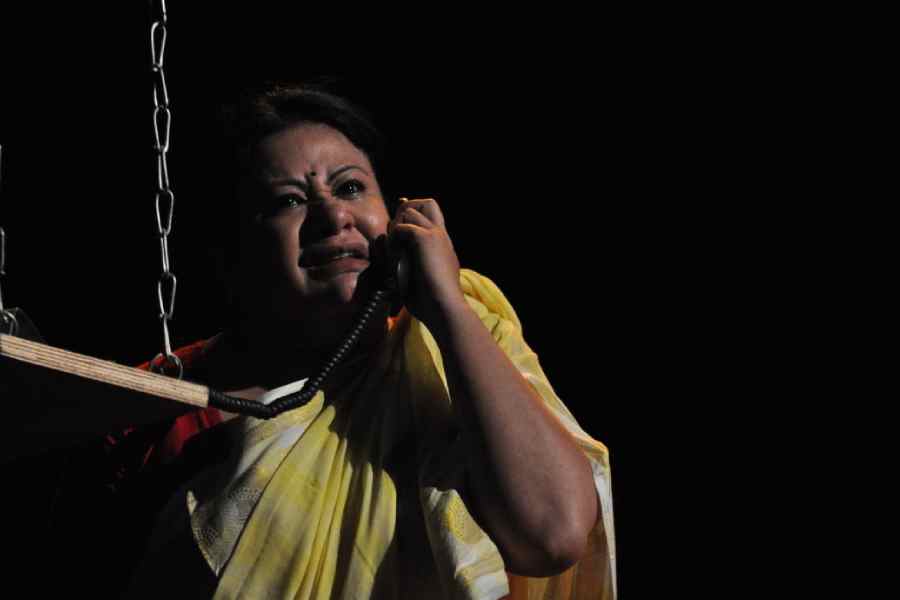How should we approach the milestones of 20th-century Indian theatre now? Should we retain the original script in toto or should we allow alterations, in moderation, to suit the changing tastes? Given the sweeping changes in the ethical and the moral ecosystems, what should be the strategy to deal with ‘the woman question’? There is no straight answer as two recent productions of Nitish Sen’s Aparajita (1971) and Girish Karnad’s Nagamandala (1988) showed.
Barrackpore Bratyajon premiered Aparajita Ajo at Minerva Theatre on May 29. The director, Prantik Choudhury, who also edited Sen’s script, should explain why ‘ajo’ (it roughly translates to even today) was added to the title for he hardly made any changes to the original, either in content or intent. Musical cues, such as using the song, “Lambi judaai”, from the Hindi film, Hero (1983), as a leitmotif place the play in the mid-1980s. The prop of the telephone, which juggles the claustrophobic existence of a middle-aged divorcee and her eagerness to break free to find a room of her own, looks like the plastic diallers of the 1980s but sounds like the rotary phones made of bakelite in the 1930s.
Such aberrations were laid to rest by Nancy’s electrifying solo act (picture). Here’s an actress of immense talent — arguably the best of her generation — showcasing the full array of her skill set in this 65-minute-long gem. I have seen Nancy mature over two decades. Sen’s text demanded layered role-playing and she flourished, appropriating the different linguistic registers, singing and dancing, conveying the slightest shifts in the character’s mental graph while keeping the audience in a state of restless anticipation all along — a masterclass in method acting, including flirtations with the fourth wall.
The set was heavier than desired. The backdrop was an eyesore. But Prithwish Rana’s lights, especially in the crucial moments lit in crimson red, were spot on. Having only heard about Tripti Mitra’s legendary act in Bohurupee’s production of Aparajita, I cannot really vouch for Nancy’s supremacy in Aparajita Ajo; but Choudhury’s production design was tailor-made for Nancy such that she found ample scope to keep the audiences enthralled without losing their critical faculty.
Satyabrata Rout’s credentials as a master of scenography and a brilliant manipulator of stage properties find a remarkable expression in New Delhi-based Black Pearl Arts’s adaptation of Nagamandala. Produced last year, this visually arresting work was recently staged at Rabindra Mandap, Bhubaneswar, during the National School of Drama’s Bharat Rang Mahotsav. When a group, consisting mostly of youngsters and rank-newcomers, keeps optimum faith in the ability of a guest director of Rout’s calibre and pulls out all the stops to mount a production worth its name, one can get fresh insights into a much-seen and a much-discussed play. Rout’s unflinching faith in Karnad’s premise — a woman’s personal quest for fulfilment, both carnal and spiritual — keeps this Nagamandala rooted in folklore and rituals bordering on superstition.
For a change, Rout gives this adaptation a musical touch, inspired by his old association with B.V. Karanth. Led by the multi-talented Virendra Kumar Jani, members of Black Pearl Arts honed their musical abilities and put on their dancing shoes. Rout designed a skeletal set with a huge lock as the centrepiece. Sapna Mishra’s choreography energised the dream sequences. The actors, spearheaded by a scintillating Swati Singh and an age-defying Simran Singh as Kurudabba, did
the rest.











